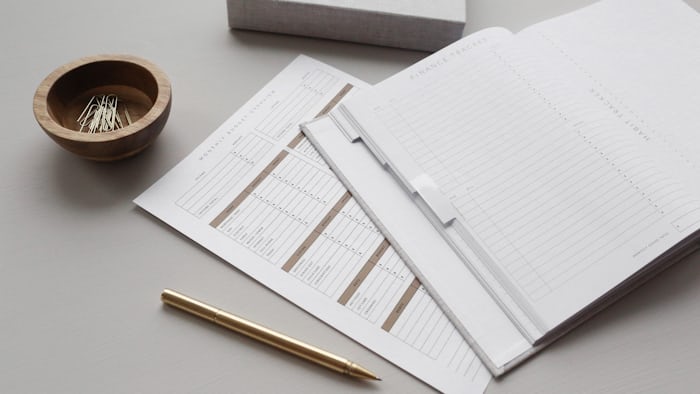Last updated Apr. 22, 2024 by Jessica Green
When it comes to budgeting, people make use of rules that work best for them. And for a budgeting rule to work for you, you must understand everything about it.
The 60-20-20 rule is one of the many budgeting rules most people use. It is effective for most, while some find it unrealistic.
Before you go ahead to use the rule, here’s a detailed article that gives you a full understanding of the 60-20-20 budgeting rule.
What Is The 60-20-20 Rule?
The 60-20-20 rule is a percentage budgeting method that guides you on how to allocate your income to different spending categories.
The rule states that 60% of your net income should be spent on needs, which includes the necessary daily expenses you make. Your daily expenses can include fixed and recurring costs. To put it more clearly, here are the expenses that can be included in this category:
Transportation costs
Mortgage payments or rents
Car repair and maintenance
Groceries
Utility bills
Student loan payments and other debts
Electric and phone bills
Next, 20% should be allocated to your wants. List out all the things you want to buy or things you enjoy doing. Some examples include shopping, traveling, and dining out. Make sure you spend no more than 20% of your income on them.
The final 20% is to go into your savings account. You can decide to fund your retirement account with 20% of your income or save for emergencies. Most people save direct this percentage of their income to their investment accounts.
How The 60-20-20 Rule Works

The 60-20-20 budgeting rule follows a simple technique which makes it popular amongst people who budget. If you’re considering using the rule, here’s how it works:
Allocate 60% Of Net Income To Important Expenses
The 60-20-20 rule recommends spending 60% of your salary on necessities which include groceries, transportation, utility bills, and housing costs.
Necessities differ from people to people. So request a bank statement, study it, and make a list of all the expenses that are necessary for daily living.
Most people include debt repayment in the ‘necessity’ category. However, it depends on your financial situation.
If your debts are low and can fit into a 60% budget, go ahead and add it. On the other hand, if you owe a lot in debt, you might need to change the budgeting rule you use or modify the 60-20-20 rule.
Allocate 20% To Wants
Once you have allocated funds to the most important expenses, there’ll be 40% of your income remaining. Out of the 40%, spend 20% on things you enjoy doing.
Some of the things to include in this budget category include:
Concert or movie tickets
Shopping for clothes and skin care products.
Weekend trips
New home appliance
A gift for a friend or family
Gym Membership and more
20% To Savings
After budgeting for your needs and wants, set aside the remaining 20% for savings. The savings can be for an emergency, a house downpayment, retirement, or investment.
But rather than save towards something, most people with high-interest debts channel 20% to debt repayment. So it depends on your financial situation.
However, it is often advisable to pay off all your debts before creating a savings goal. Once you clear off your debts and build a good credit score, you can always take out more loans in the case of an emergency.
Another Interesting Article: How Many Months Of Emergency Fund Is Enough?
How To Get Started With The 60-20-20 Budgeting Rule?
If you plan on using the 60-20-20 method, here’s a guide on how to get started:
1. Get your bank statement and review all your expenses. If you find this stressful to do or can’t deal with numbers, use a budgeting app that simplifies this process.
2. Calculate Your Net Income
If you’re paid on an hourly basis, know how to convert your hourly pay to a monthly payment.
Here are articles that convert your hourly rate to monthly/annual income.
$13 an Hour is How Much Per Year? [Before and After Taxes]
$14 an Hour Equals How Much a Year
$15 an Hour is How Much per Year?
$17 an Hour is How Much per Year?
How Much Does $18 an Hour Equal Per Year? (Can You Live Off It)
$23 an Hour is How Much per Year?
Once you calculate your salary, pay your taxes to your net income. However, if you’re a salaried employee, the amount that is deposited into your account is your net income.
3. Categorize Your Expenses
Your bank statement allows you to view all the expenses you make in a month. Once you make a list of your expenses, divide them into three categories – needs, wants, and savings or debt.
Needs should include expenses that are important for your daily living. Do not include expenses that you can without.
Wants are things that you desire to spend money on
Savings include the amounts you put into a retirement account or emergency funds account
Debts are money you owe
4. Budget 60% To Needs, 20% To Wants, and 20% To Savings or Debt
Once your expenses are categorized, allocate 60% to needs, 20% to savings or debt, and 20% to wants.
In the case where your needs require more than 60% of your income, you have two options – cut down on expenses or modify the rule. You can take funds from the amount allocated to wants.
60-20-20 Rule Example
Here is an illustration using the 60-20-20 rule:
Susan’s salary after tax is $3,500 monthly, here’s how she uses the 60-20-20 approach during budgeting.
60% to daily living expenses is $2,100
20% to wants is $700
20% to savings or debts is $700
Susan Monthly Income | |||||
|---|---|---|---|---|---|
NEEDS | NON-NECESSITIES | FINANCIALS | |||
Housing costs | $800 | New clothes | $100 | Monthly debt payment | $500 |
Gas | $200 | Concert tickets | $120 | Savings | $200 |
Groceries | $500 | New shoes | $50 | ||
Phone bills | $100 | Birthday gift for a friend | $70 | ||
Transport Costs | $200 | Travel to new places | $200 | ||
Electricity | $200 | Eat-out | $100 | ||
Internet | $100 | ||||
Total | $2,100 | Total | $640 | Total | $700 |
Balance | 0 | Balance | $60 | Balance | 0 |
From the above table, it can be seen how Susan uses the 60-20-20 rule. Since there is a $60 balance from the ‘wants’ category, Susan can choose to do whatever with it.
Why Is The 60-20-20 Rule A Good Budget To Use

The 60-20-20 rule isn’t the most popular budgeting rule. However, it is beneficial in several ways.
If you’re skeptical about using the rule, here are some good reasons to use it:
1. Simple and easy to implement
Most budgeting methods often require deep-level thinking and planning. But you only have to allocate funds to categorize expenses when using the 60-20-20 rule.
2. All Inclusive
The 60-20-20 rule considers every expense you’re likely to make, and it enables you to allocate your income to them.
3. Less Restrictive
Most budgeting rules are debt or saving-intensive without giving room for non-necessities. However, the 60-20-20 enables you to budget for needs, non-necessities, savings, and debts.
4. Flexible and More Free
The rule is flexible and can easily be modified to fit your financial situation.
Regardless of the financial problem you face, the rule can help you sort it out. For instance, if you’re in debt and need to pay it off, allocate 20% of your income to debt, if you need to create an emergency funds account, put aside 20% of your income, and if you need freedom to spend on non-necessities, the rule gives you the chance to do so.
Who Should Use The 60-20-20 Rule?
The truth is, the 60-20-20 rule isn’t for everyone. Although it’s simple and comes with tons of benefits, it doesn’t work for everyone. So before you decide to adopt the rule, here’s a heads up on who should use the rule.
1. Low Income Earners
The 60-20-20 allocates over half of your income to necessities. So as a low-income earner, this rule allows you to budget for all that you need for daily living.
2. People With Little Or No Debts
Only 20% of your salary goes towards debt repayment. So if you have little debts to pay off, this rule is suitable for you.
3. People With No Strict Financial Goals
If you want to live a simple life with no plans on becoming the next wealthy person, use the 60-20-20 rule. It allows you to spend on things you need and enjoy. The rule does not allocate a high percentage of your salary to savings or investments.
Who The 60-20-20 Rule May Not Work For
If you fall under any of the following categories, the 60-20-20 rule may not work for you.
1. High Income Earner
The 60-20-20 budgets 60% of income to necessities. This can be considered ‘too much’ if your monthly income is high. You may need to go for a budgeting plan that allocates a lesser percentage of income to necessities and other categories.
2. Someone with high-interest debt
If you have a high-interest debt to pay off, you need a budget plan that is debt-focused. The 60-20-20 rule only budgets 20% to debt – this isn’t enough to get you out of your debt.
3. Someone with financial goals
If you have financial goals to achieve, the 60-20-20 rule is not a recommended plan to use as it does not allocate much to savings.
How To Make A 60-20-20 Budget Work For You

The 60-20-20 rule does not work for most people because they use the rule in the wrong way. Here are some guides on how to make the 60-20-20 rule work for you.
1. Set automatic deductions each month
Most people budget 60% of their income for necessities but end up spending more than 60%. To avoid this situation, set up automatic deductions with your bank. Once you receive your salary, 20% immediately goes to your savings account, the other 20% can be transferred to another account. Thus, leaving you with only 60% for necessities. In this way, you’ll end up sticking with the 60-20-20 rule.
Related: How to Set Up Automatic Savings and Put Your Savings Money on Autopilot
2. Modify the rule to fit your financial situation
If the 60-20-20 plan cannot work in your situation, modify the rule until it fits.
The purpose of the 60-20-20 rule is to find a simple and efficient way to help you manage your income. So it doesn’t matter how you modify the rule. What matters is that you manage your income efficiently.
Another Interesting Article: 18 Best Budgeting Methods That Actually Work
Top 5 Tips For Successful Budgeting
Regardless of the budgeting method you choose to adopt, these tips will help you.
1. Budget for your financial situation: Always consider your financial situation when making a budget plan. In addition, set realistic and attainable goals.
2. Review your budgets once in a while. This enables you to find ways to cut down on certain expenses and save money.
3. Stay Committed: One of the keys to a successful budget is commitment. Hence, make realistic plans, and stick to them to achieve good results.
4. Use Online Tools: There are apps and online tools dedicated to the different budgeting rules/methods. For example, the YNAB app uses a zero-based budgeting method, HoneyDue is suitable for partners budgeting together, and GoodBudget uses the envelope budgeting method.
5. Set Financial Goals: The financial goals you make help you determine what budgeting rule/method to use. It also drives you to stay committed to the plan.
Other Popular Budgeting Rules

The 50-30-20 Rule
This rule gives 50% of your income to necessities, 30% to non-necessities, and 20% to debt repayment or savings. It is very popular and less restrictive.
Who should use it? Since the rule allocates a higher percentage of income to non-necessities and less to savings or debts, it is most suitable for people with no pressing financial needs or debts.
The 30 30 30 10 Rule
This rule budgets 30% to housing costs, 30% to necessities, 30% to debt repayment, and 10% to non-necessities. It is a strict budgeting plan.
Who should use it? The rule is most recommended to people with high housing costs and debts.
Related: Will the 30-30-30-10 Budget Rule Work for You?
The 40 30 20 10 Rule
The 40-30-20 rule focuses less on necessities. It allocates 40% to needs, 30% to wants, 20% to savings, and 10% to debts.
Who should use it? This rule is most suited for people with little debt and who prioritize spending on things they enjoy, this
The 75 15 10 Rule
This rule budgets 75% of income to necessities, 15% to non-necessities, and 10% to savings.
Who should use it? People whose expenses on necessities take up the most of their income.
Final Thoughts
Overall, the 60-20-20 is a good budgeting rule to adopt. However, to make it work, you must stay committed to the rule.







